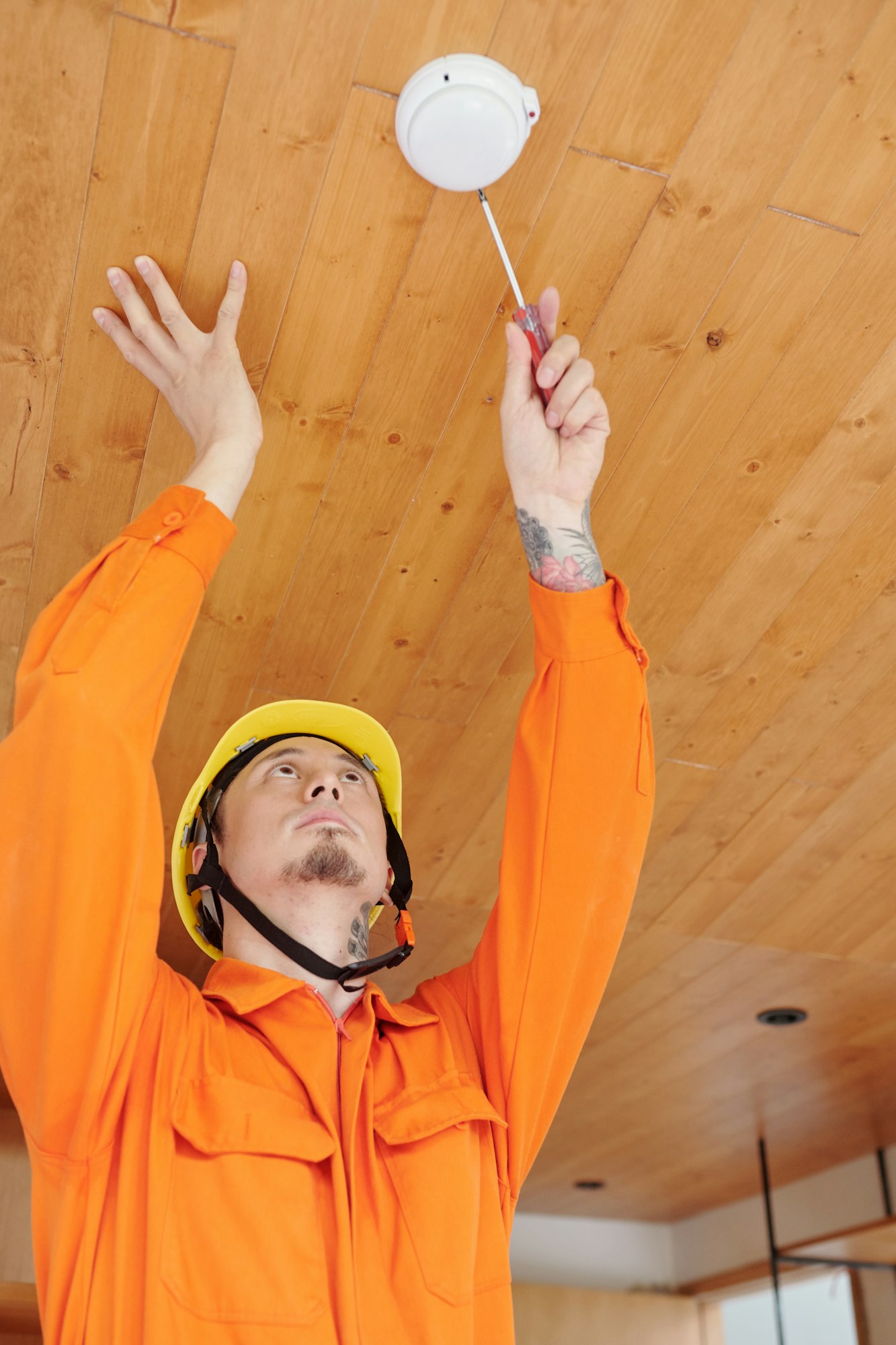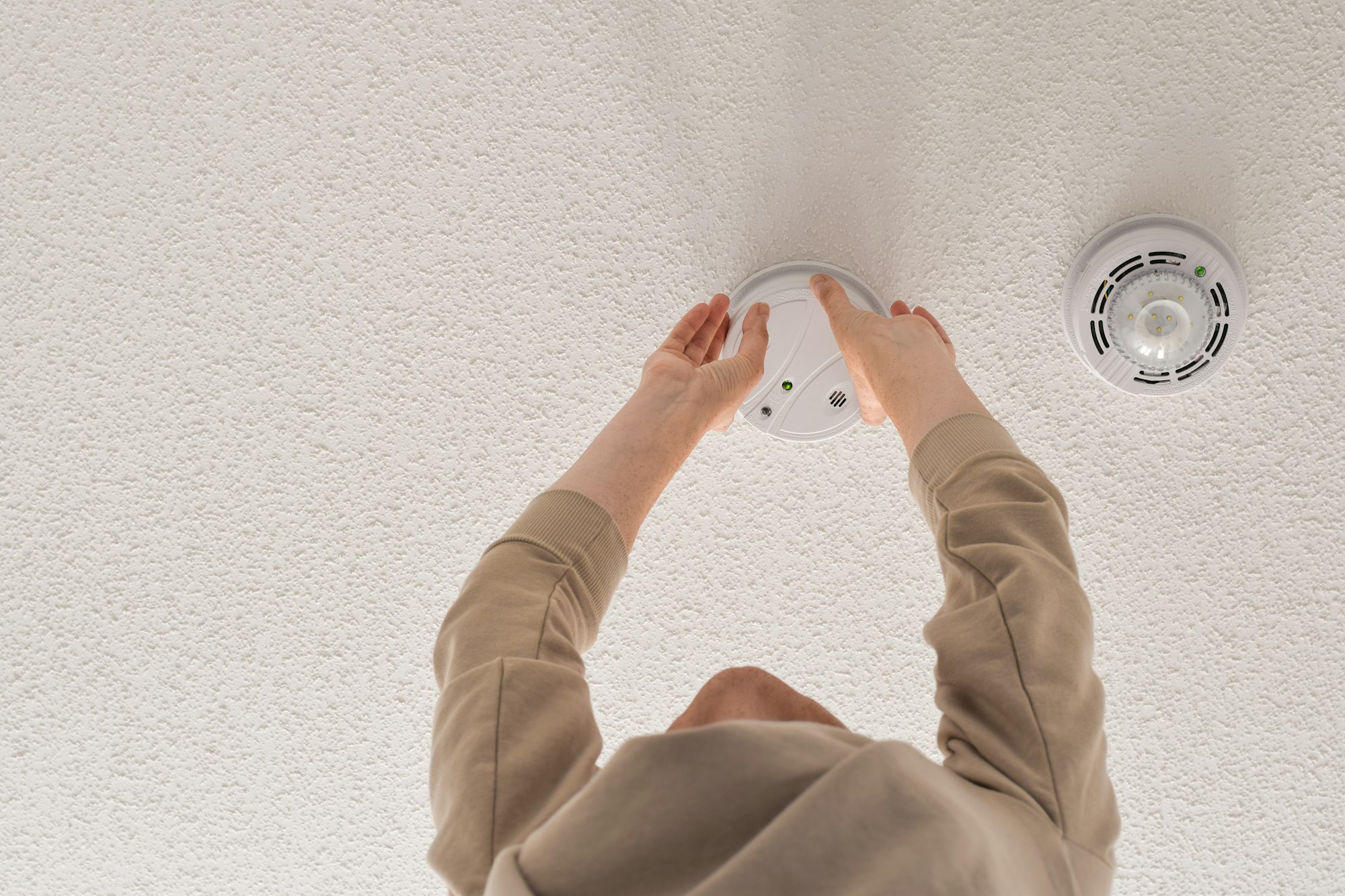Smoke Alarm Install
Home / Service Details

Home Repair Services
Smoke Alarm Installation: A Comprehensive Guide
Smoke alarms are crucial safety devices that every household should have. In the event of a fire, they provide early detection, giving occupants valuable time to evacuate safely. In this guide, we’ll delve into the importance of smoke alarms, different types available, factors to consider before installation, step-by-step installation instructions, maintenance tips, and the benefits of professional installation.


1. Introduction
Smoke alarm installation is not just about compliance; it’s about safeguarding lives and property. Properly installed and maintained smoke alarms can mean the difference between life and death in a fire emergency. In this article, we’ll explore everything you need to know about installing smoke alarms in your home.
2. Importance of Smoke Alarms
Smoke alarms act as an early warning system, alerting occupants to the presence of smoke or fire. They detect smoke particles in the air and emit a loud, audible alarm to wake sleeping residents and prompt evacuation. According to the National Fire Protection Association (NFPA), having working smoke alarms cuts the risk of dying in reported home fires in half.
3. Types of Smoke Alarms
– Ionization Smoke Alarms
Ionization smoke alarms are highly effective at detecting fast, flaming fires. They contain a small amount of radioactive material that ionizes the air, creating an electrical current. When smoke enters the chamber, it disrupts the current, triggering the alarm.
– Photoelectric Smoke Alarms
Photoelectric smoke alarms are best at detecting slow, smoldering fires. They use a beam of light that, when interrupted by smoke particles, triggers the alarm. These alarms are less prone to false alarms from cooking smoke or steam.
– Dual Sensor Smoke Alarms
Dual sensor smoke alarms combine both ionization and photoelectric technologies, offering comprehensive fire detection capabilities. They provide early warning for both fast-burning and smoldering fires, making them a popular choice for home safety.
4. Factors to Consider Before Installation
– Location
Place smoke alarms on every level of your home, including the basement and inside each sleeping area. Install them on the ceiling or high on the wall, away from windows, doors, and air vents.
– Number of Alarms Needed
The number of smoke alarms needed depends on the size and layout of your home. Ensure there is at least one alarm on every level and one in each bedroom.
– Interconnection
Interconnected smoke alarms communicate with each other, so when one alarm detects smoke, all alarms in the network sound simultaneously, providing comprehensive coverage throughout the home.
5. Step-by-Step Guide to Installing Smoke Alarms
– Gathering Necessary Tools and Materials
Before starting the installation process, gather the necessary tools and materials, including smoke alarms, batteries, a ladder, a screwdriver, and a pencil.
– Planning the Placement
Map out the placement of smoke alarms according to the manufacturer’s instructions and the factors mentioned earlier. Mark the locations with a pencil before installation.
– Installing the Alarms
Follow the manufacturer’s instructions to install the smoke alarms securely. Use screws and anchors if necessary, ensuring the alarms are flush against the ceiling or wall.
– Testing the Alarms
Once installed, test each smoke alarm to ensure it’s functioning correctly. Press the test button on each alarm and listen for the loud, audible sound.
6. Maintenance Tips for Smoke Alarms
– Regular Testing
Test your smoke alarms monthly by pressing the test button. If the alarm doesn’t sound, replace the batteries immediately.
– Cleaning
Keep smoke alarms free of dust and debris by gently vacuuming or wiping them with a soft, dry cloth.
– Battery Replacement
Replace smoke alarm batteries at least once a year or according to the manufacturer’s recommendations. Consider using long-life lithium batteries for extended durability.
7. Benefits of Professional Installation
While DIY installation is possible, hiring a professional ensures proper placement and functionality of smoke alarms. Professionals can also provide valuable advice on maintenance and additional safety measures.
8. Conclusion
Smoke alarm installation is a critical aspect of home safety. By understanding the importance of smoke alarms, choosing the right type, and following proper installation and maintenance procedures, you can significantly enhance the safety of your home and protect your loved ones from fire emergencies.
FAQs (Frequently Asked Questions)
How often should I test my smoke alarms?
- Smoke alarms should be tested monthly to ensure they are functioning correctly.
Can I install smoke alarms myself?
- Yes, smoke alarms can be installed as a DIY project following manufacturer instructions. However, professional installation is recommended for optimal placement and functionality.
What type of batteries should I use for smoke alarms?
- It’s advisable to use long-life lithium batteries for smoke alarms, replacing them annually or as recommended by the manufacturer.
How many smoke alarms do I need in my home?
- The number of smoke alarms needed depends on the size and layout of your home. At a minimum, there should be one alarm on every level and one in each sleeping area.
What should I do if my smoke alarm keeps beeping?
- If your smoke alarm is beeping intermittently, it may indicate a low battery. Replace the battery promptly to ensure continued functionality
Home Repair Services
Handyman in Sydney
Transform your Sydney home with our expert renovation services. From kitchen and bathroom upgrades to complete interior remodeling, we bring your vision to life with precision and style. With meticulous attention to detail and quality craftsmanship, we’ll make your dream home a reality.
Professional Staff
Trustworthy
Get in touch with us.
contact us
Get in touch
We’re happy to answer any questions you may have. Can’t find what you need in our FAQs pages? Get in touch with us.
Address
Sydney NSW 2000
Mobile
0410 415 939
















